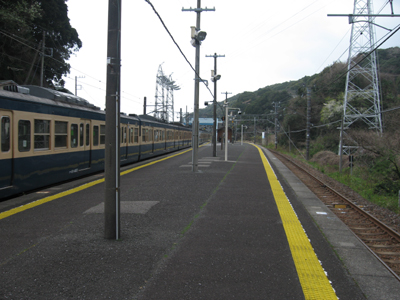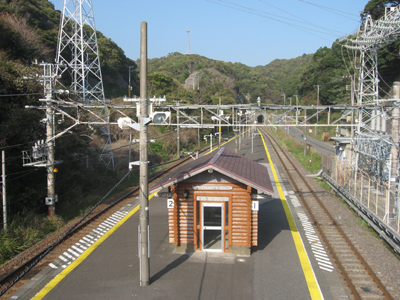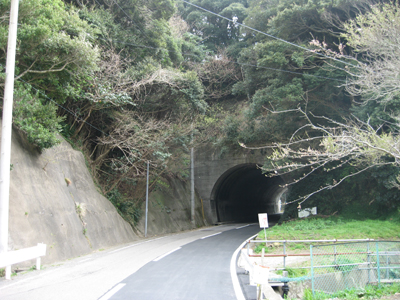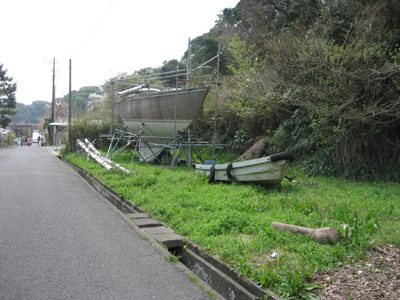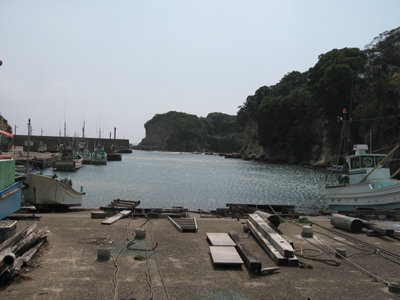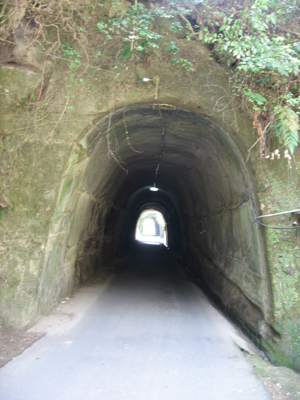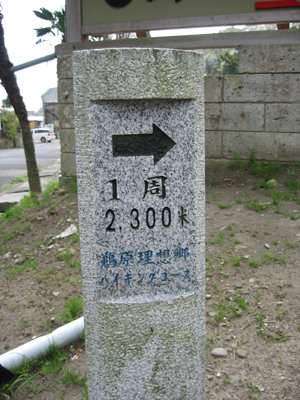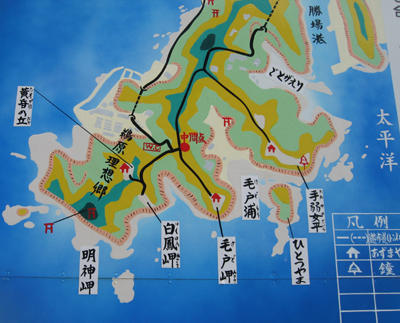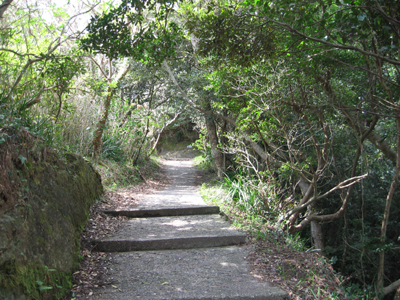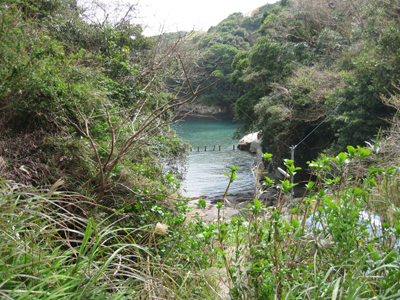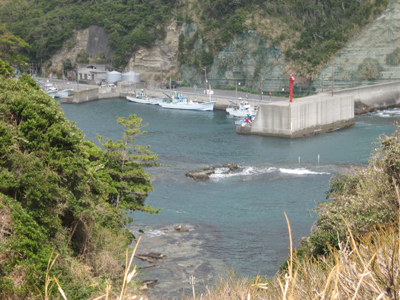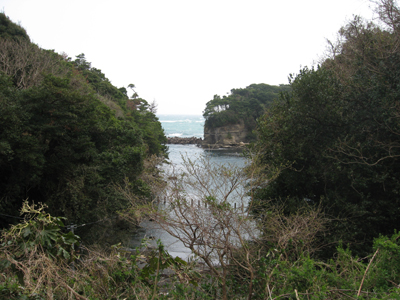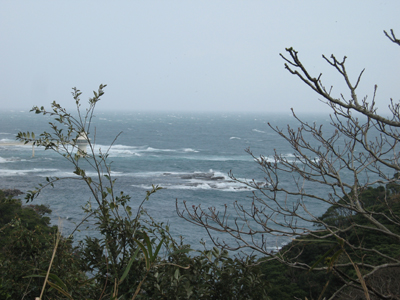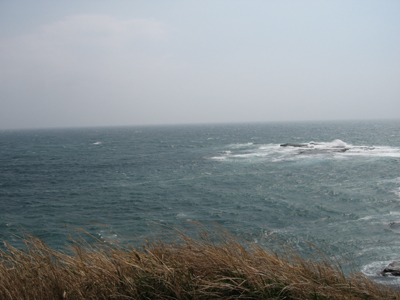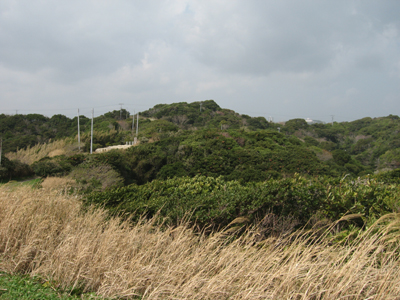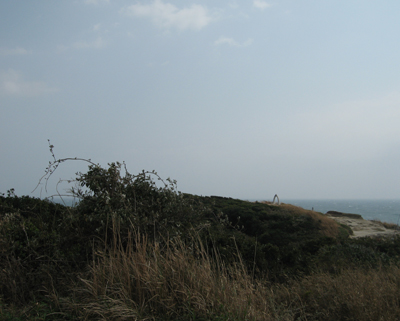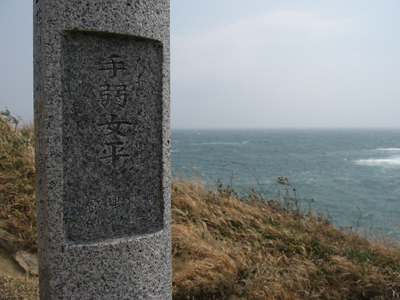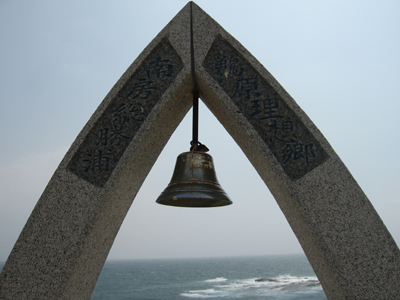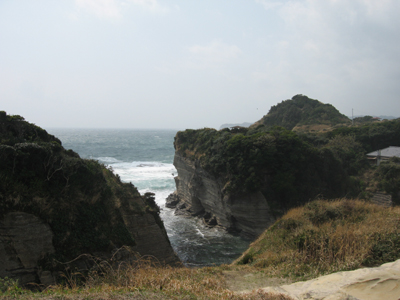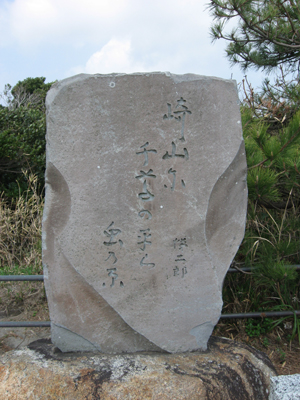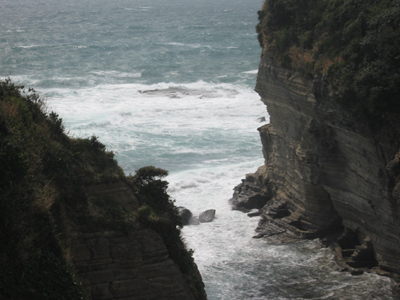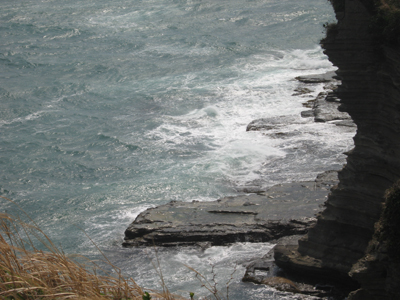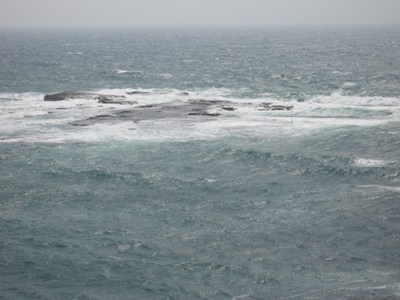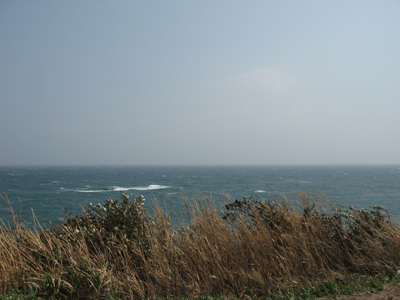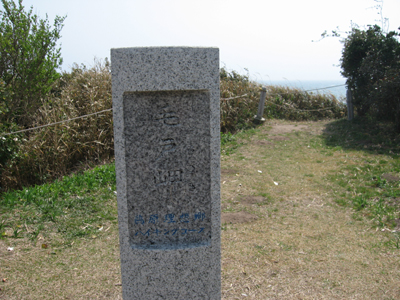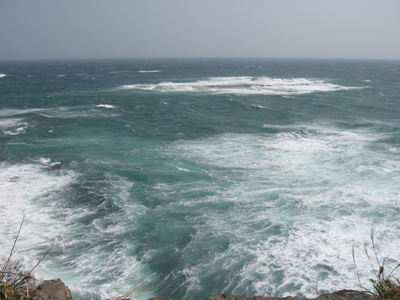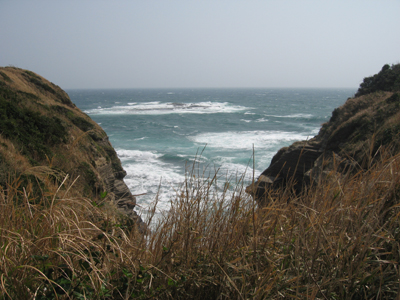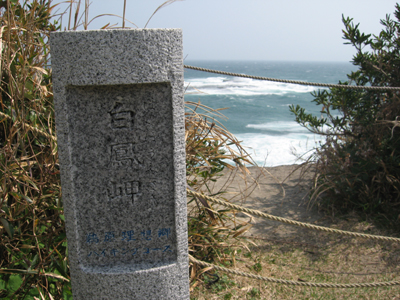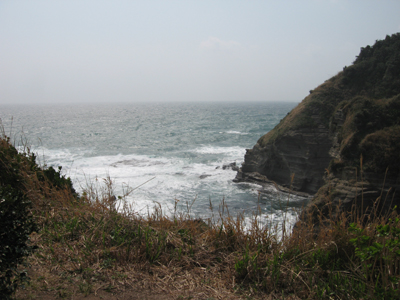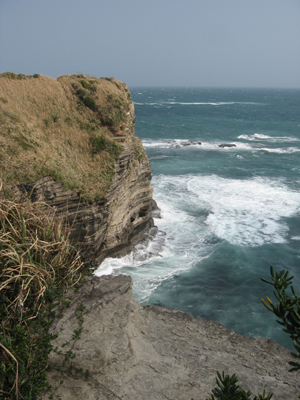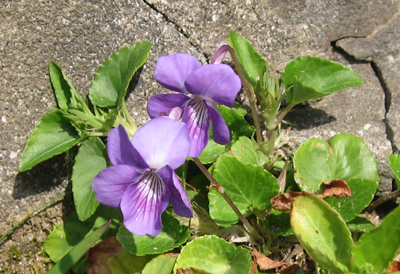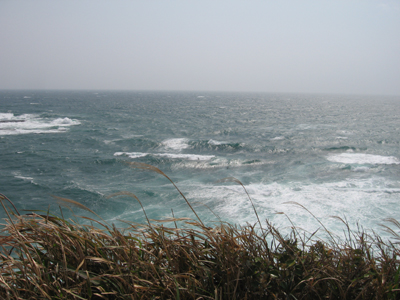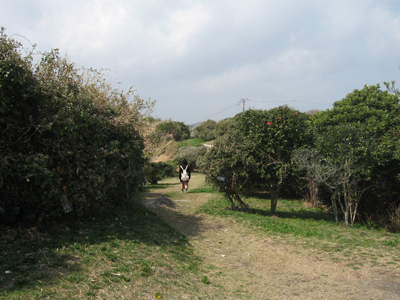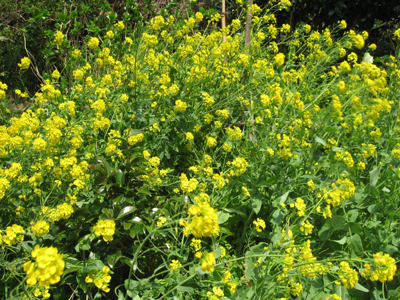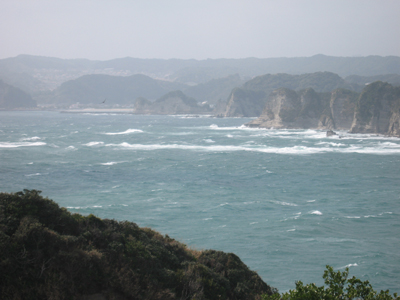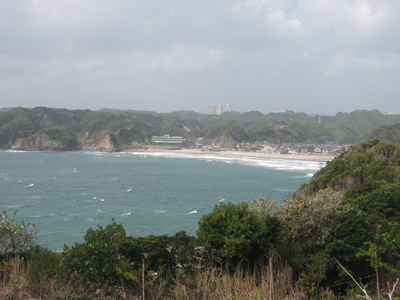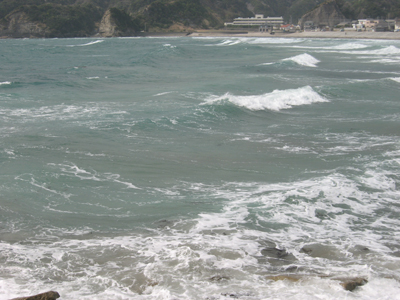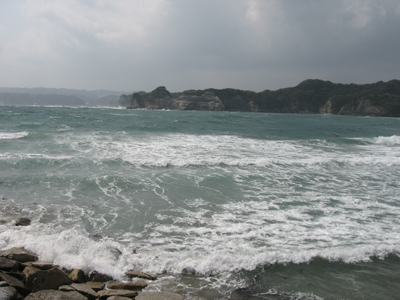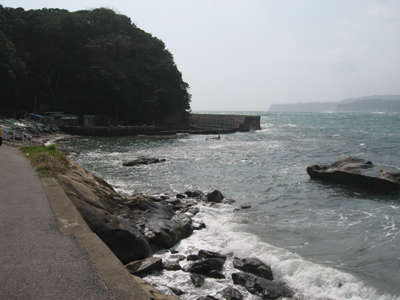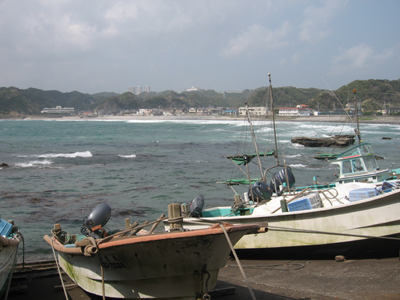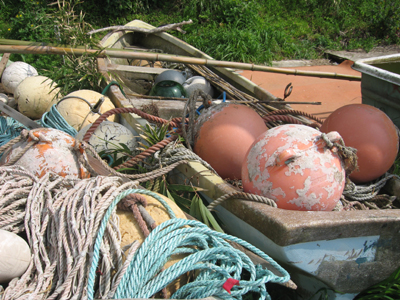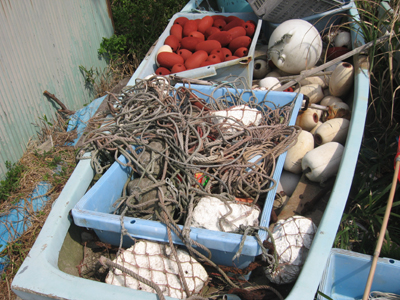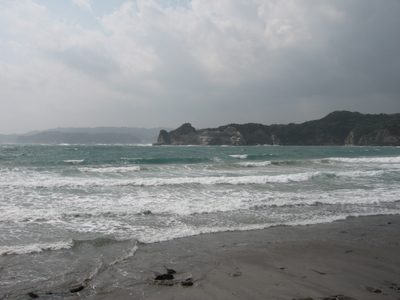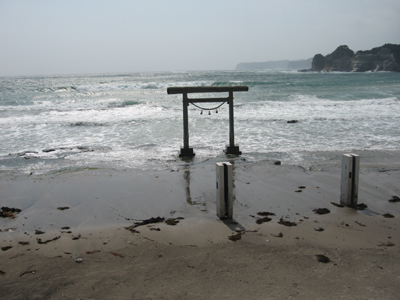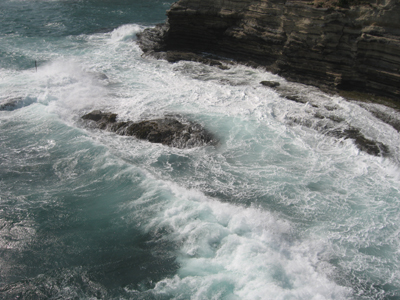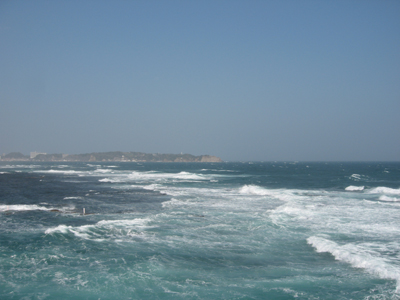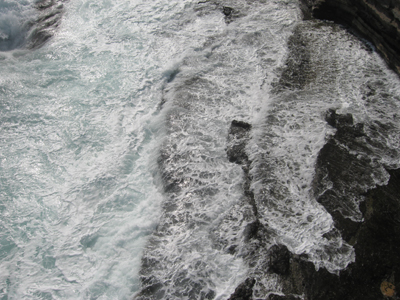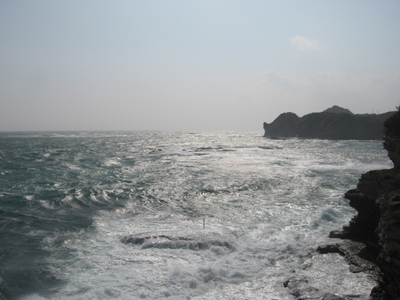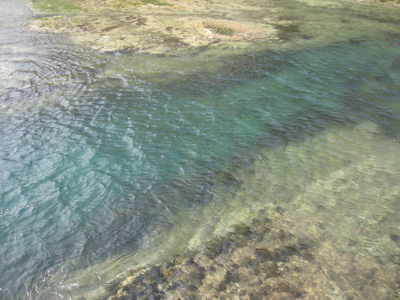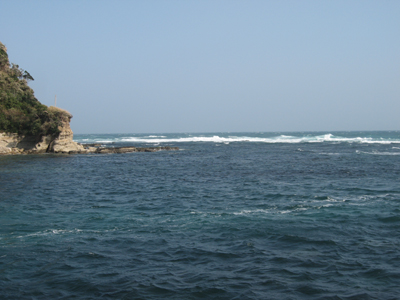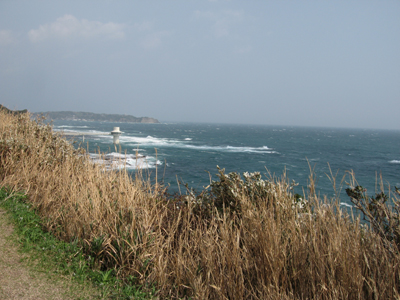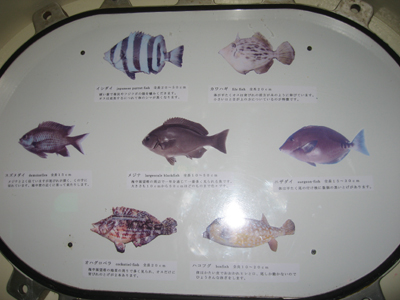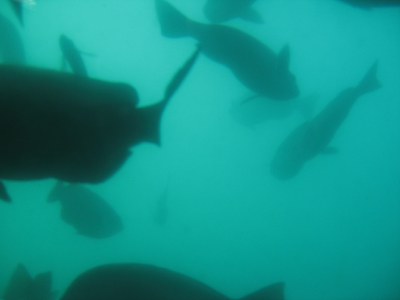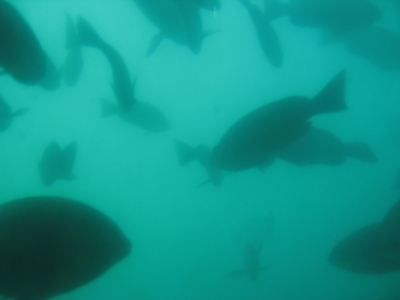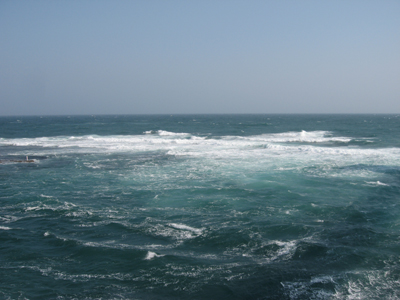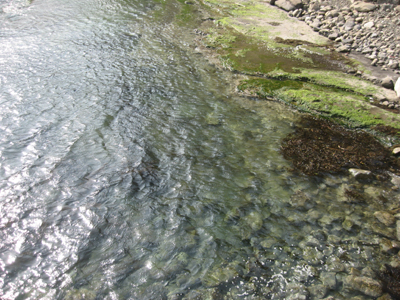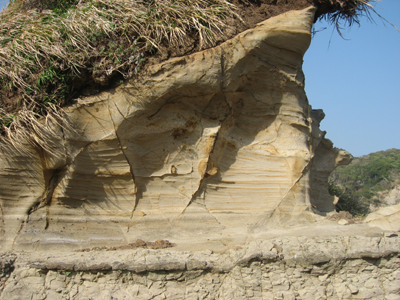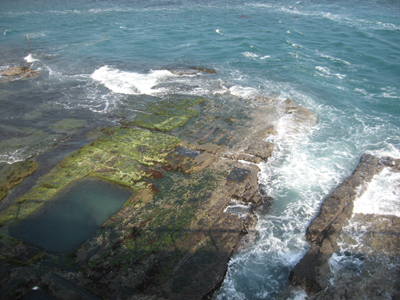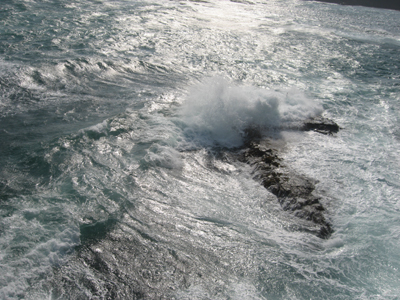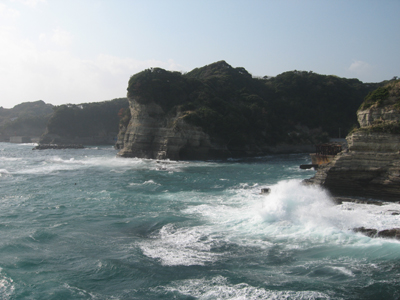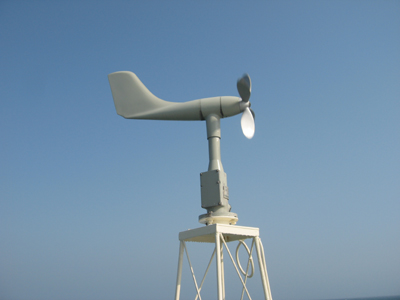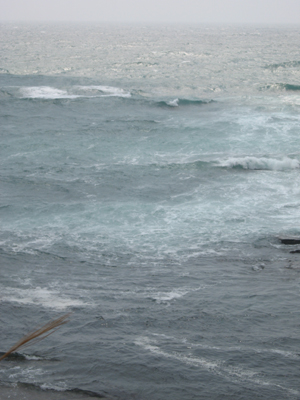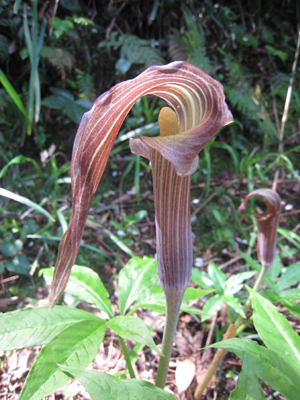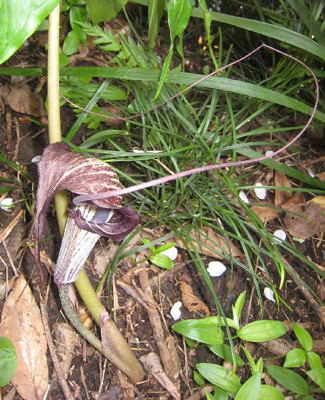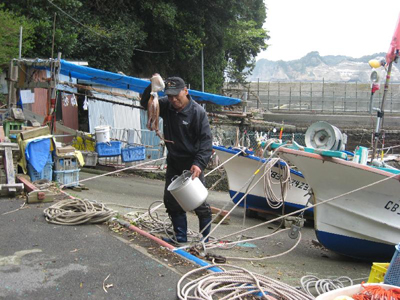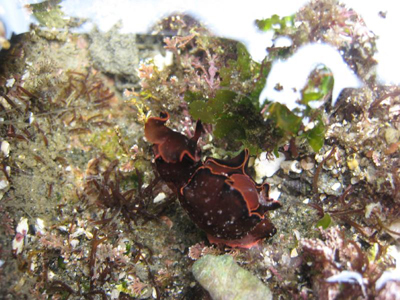「海を見に行く-房総半島鵜原理想郷散策」
To the Sea
Walking
in Ubara Risou-kyou, Boso Peninsula
March 29, 2007
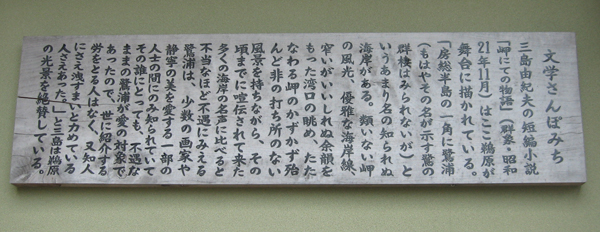
|
千葉県房総半島の鵜原を散策した。三島由紀夫の作品に惹かれたわけでもなく、与謝野晶子の歌を辿ろうとしたわけでもない。東京西郊から日帰りで行ってこられる海辺を探すうち、丁寧にこのハイキングコースを紹介する勝浦市主催のサイトに出会った。「鵜原理想郷」という面はゆいような地名には以前から興味を持っていたが、実際に歩いてみてその名の由来を確かめることができたように思う。首都圏から二時間余り、ローカル線でこのような場所に行けるのかと驚いた。 散策コース入り口へはJR鵜原駅下車ののち、10分も歩けば到着する。そこから緩い傾斜を上ったり下ったりしながら一時間半ほどの行程でいくつもの岬の頂に至り、太平洋と向き合うことができる。強風吹きすさぶリアス式海岸の絶壁は、都会モードだった心と体を一気にサバイバルモードへと転換させる。大海原の広がりとうねり、海鳴り、天と地と海の接するところに辛うじて立っているのがやっとだった。 岬から鵜原海岸へ下ると、夏はさぞかし海水浴客で賑わうだろう砂浜に出る。周囲の切り立った崖に押し寄せる波頭を遠望しながら渚を歩く。今は誰にも出会わない。都心では満開と報じられた桜もこの土地ではまだ少し早かったようだ。海の家も食べ物屋も扉を閉ざし、何もかもひっそりとしていた。 浜辺からは、再び鵜原駅近くを通過して「勝浦海中公園」へ行ける。荒磯に水深8メートル、全高24.4メートルの海中展望塔が設置されている。内部には120余段の螺旋階段があり、海中の展望室で海底の様子を観察することができる。水族館ではないので、その日によって海水の透明度が違い見られる魚も異なる。この日は視界4メートル、(おそらく)メジナの群れが窓の外を泳ぎ回っていた。 朝は東京駅から蘇我経由外房線で鵜原まで来た。帰りは鵜原から更に外房線を下って鴨川まで行き、そこから内房線に乗り換えて、館山、富浦、木更津などを経由し、蘇我から再び東京へ。結局房総半島を一周することになった。かつて父が鴨川の病院に入院していたこともあり、何度も往来した路線ではあったが当時は途中下車など思いもよらなかった。大海原を全身で堪能する一日に恵まれた。 I took a walk at Ubara in Boso Peninsula, Chiba Prefecture. I went there not because I was interested in a novel by Mishima Yukio's nor by the poetry of Yosano Akiko. (Both of them are praising the beauty of this place in their literary works.) While I was looking for a seaside trail where I could visit in a day trip, I happened to find a good website produced by Katusura City. This area is called "Ubara Land of Ideals." I've heard of this grand name with a bit of embarrassment, but truly seeing is believing." I know now the reason of the naming. Surprisingly, it takes us only 2 hours and a half from the central part of Tokyo by local trains. The starting point of the trail is in a 10 minute walking distance from Ubara Station (JR Sotobo-Line).. It takes us about one hour and a half, if we walk in a leisurely pace, to cover the hilly hiking trail. On the way we have various view spots where we can face the Pacific Ocean as much as we like. On the top of cliffs, it was extremely windy so that we could hardly stand still: our urban sense of life is immediately switched to survival instinct. In the midst of wilderness--the roar of the sea, the wind, and the boundless sky--all we could do was just to keep standing. Climbing down from the cliffs, we come to Ubara Beach which must be very popular in summer with visitors. I walked around the seaside, watching the waves rushing against the upright rock walls of the shore in the distance. In this season nobody was around. All the beachside huts and restaurants were closed. It was too early for cherry blossoms there while in Tokyo reportedly most of the cherry trees were already in full bloom. Everything was quiet in the beach. "Katsuura Sea Park" is not far from Ubara Station. There is an underwater observation tower 8 meters deep in the sea (24.4 meters as a whole). You go down by a steep winding stairway to the sea bottom. Because it's not an artificial aquarium, transparency of the seawater varies depending upon the natural condition. This day the transparency was 4 meters. A school of girella was observed out of the windows. In the morning, we went to Ubara via Soga by
JR Sotobo-Line. On the way back we caught a local train of the
same line to Kamogawa, where we changed to JR Uchibo Line. We
went back to Tokyo via Tateyama, Tomiura, Kisarazu, and Soga
(again). It means we went all around Boso Peninsula in a day.
Once my father was staying in a hospital in Kamogawa; so we
used to go back and forth between Tokyo and Kamogawa frequently
by both Sotobo/Ucihibo Lines. We were familiar with the area
but we never thought of going out of our fixed route those days.
This time I totally enjoyed a day in Boso Peninsula. |
